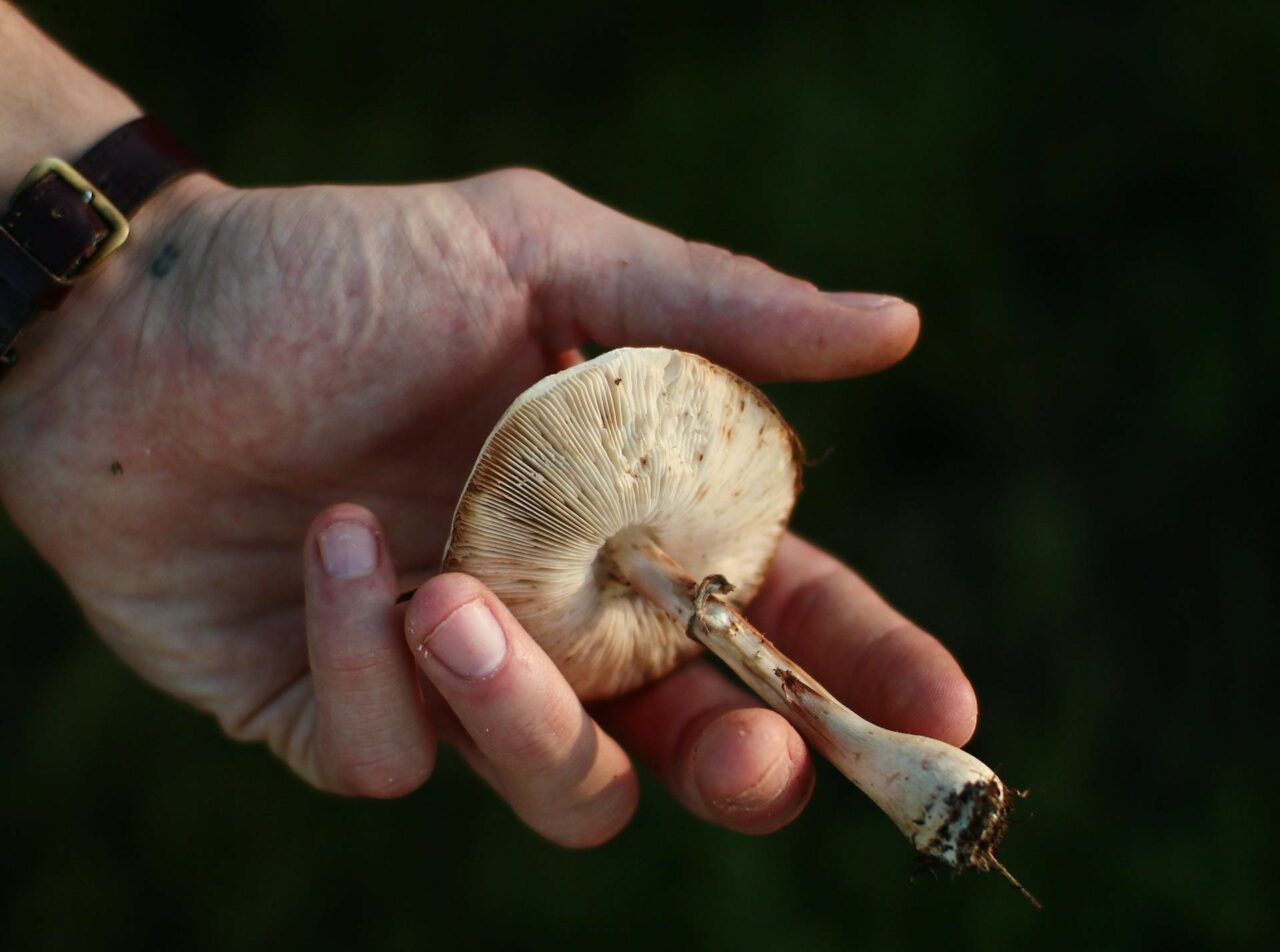Psilocybin mushrooms, traditionally known as psychedelics, function similarly to LSD as a serotonin 5-HT2A receptor agonist. As potential treatments for mental health conditions like major depression, anxiety, cluster headaches, and migraines, these mushrooms are the subject of numerous ongoing studies in psilocybin-assisted therapy.
Understanding how shrooms can alleviate these conditions requires an exploration of their metabolism within the body. This knowledge enables both researchers and users to identify how the active compound triggers psychological and therapeutic effects. This article serves as a basic guide to the pharmacology and pharmacokinetics of psilocybin.
[toc]
Key Takeaways:
- Half of the ingested psychedelic fungi is absorbed and distributed throughout the body.
- The compound within the fungi is dephosphorylated by the enzyme alkaline phosphatase, primarily in the liver.
- Around 3.4% of the compound is excreted in its unaltered form within 24 hours, while most is expelled as a stable metabolite.
What Does Pharmacokinetics Mean?
Pharmacokinetics (PK) refers to the study of how substances, such as drugs, are processed by the body once ingested. It is closely related to pharmacodynamics, which studies how a compound interacts with the body. PK primarily focuses on four aspects: absorption, distribution, metabolism, and excretion (ADME).
By understanding these processes, healthcare professionals can prescribe the most effective drugs with the least risks. It also allows them to customize treatments according to each patient’s specific physiology and lifestyle.
The Role of Pharmacokinetics in Understanding Psilocybin:
Psilocybin and psilocin, the main active compounds in certain magic mushroom species, have piqued the interest of both researchers and users. Pharmacokinetics explores how the human body processes mushrooms containing psilocybin, aiding in the understanding of their potential medicinal or recreational effects.
These compounds are often referred to as “magic,” “psychedelic,” “medicinal,” or “sacred.” After consuming fungi containing these compounds, The types of mushrooms, their origins, sizes, the conditions under which they grow and are dried, and their age can significantly alter their concentrations.
While these mushrooms can naturally be found in the wild, scientific methods have been developed to synthetically produce them in labs. Both naturally occurring and lab-produced versions display low toxicity, but minor side effects such as nausea or vomiting may occasionally be experienced.
In spite of these physical effects, the compounds within these mushrooms have demonstrated potential therapeutic benefits due to their safety profile and non-addictive qualities. This has prompted researchers to investigate their use in psychotherapy, particularly as a treatment for conditions like anxiety and depression.
The 4 Phases of Pharmacokinetics
Psilocybin, the compound found in these mushrooms, is inactive in its natural state and functions as a prodrug, converting into its active form, psilocin. Enzymes such as alkaline phosphatase facilitate this transformation, enabling psilocin to be absorbed and circulated throughout the body to various tissues. However, after being orally administered, psilocybin is undetectable in the circulatory system, feces, or urine.
Absorption
Absorption refers to the process by which the compound enters the bloodstream from the site of administration. It affects the rate and effectiveness with which the compound reaches its target destination, such as the plasma. Oral administration is the most common method used. Inhalation has been tried, but it is not as efficient as consumption by mouth.
The process of absorption also involves the compound being released from the dosage form during oral ingestion. Elements like a delay in the throat or esophagus can affect this, potentially causing a slowdown in results or irritation. Once the compound arrives in the stomach, the acidic environment may start to decompose it before it can enter the bloodstream.
Studies on animals suggest that only approximately 50% of orally administered psychedelics are absorbed and distributed throughout the body.
Factors Affecting the Absorption Process
There are several factors which can influence the absorption process, causing variations in the onset, intensity, and duration:
- Stomach Contents: The presence of food in the stomach can slow down the process as it delays the onset of effects. Conversely, an empty stomach allows for quicker absorption.
- Body Fat: Substances may accumulate in fat tissues, potentially prolonging their effects.
- Age: Metabolic rates and body composition can vary with age.
- Zero-Order Kinetics: The substance is eliminated at a steady rate, regardless of its concentration.
- First-Order Kinetics: The rate of elimination is directly related to the drug’s concentration.
Dispersion pertains to the dissemination of psilocin throughout the body once it enters the bloodstream. Psilocin, being lipophilic, can traverse the blood-brain barrier and access the central nervous system.
system.Various factors including the product’s size, polarity, protein-binding capacity, as well as an individual’s physiology—such as hydration status and body composition—significantly impact this process.
The aim is to achieve an effective concentration at the targeted site. For the product to be effective, it must reach its intended location, as defined by the volume of distribution, and remain unbound to proteins, allowing it to actively engage with its receptor.
What Factors Affect the Dispersion Process?
Several factors can affect the dispersion process:
The effects typically manifest within 20-40 minutes of ingestion, peaking around 80-100 minutes. The effects of magic mushrooms usually persist for about 4-6 hours.
How Does Dispersion to the Brain Happen?
Initial experimental studies on two species revealed that its binding affinity follows the order of 5HT2A > 5HT1A > 5HT2B [23]. It also attaches to receptors of dopamine D1, 5HT1E, 5HT5A, 5HT7, 5HT6, D3, 5HT2C, and 5HT1B.
It acts as a partial agonist at the 5HT2A receptor, with an efficacy of about 40%. The psychedelic effects can be attributed to its partial agonist activity at 5HT1A autoreceptors.
The mood-elevating and psychotomimetic experiences could be linked to the noticed correlation between increased dopamine levels and sensations of depersonalization and euphoria. Hallucinogens work by modifying neurochemistry and receptor activity. They enhance 5HT2A agonist activity by promoting BDNF synthesis in the hippocampus, which in turn encourages neurogenesis and reduces conditioned fear-related behaviors.
Elimination
Elimination represents the process by which the
The body purges a substance mainly through the kidneys, but also through the lungs, skin, or gastrointestinal tract. In the case of the kidneys, a naturally occurring psychedelic drug is either filtered in the glomerulus or secreted in the tubules, with some reabsorption adding layers of complexity to the process.
The primary compound has a half-life of about 160 minutes, while the half-life of psilocin is roughly 50 minutes. Animal studies have revealed that this substance is predominantly excreted in the urine, accounting for approximately 65% within 8 hours. Even after consumption, traces of the substance can be detected in reduced amounts in bile and feces.
In humans, about 3.4% of the substance is expelled unaltered within a day, while the majority is excreted as psilocin-O-glucuronide, a more stable metabolite. This stability allows the compound to be identifiable in urine tests for extended periods.
There are two primary pathways for substance elimination:
Most psychedelic drugs follow the first-order kinetics approach, reaching stable concentrations after four to five half-lives. Complete removal also occurs after four to five half-lives.
Discover Our Assortment of Hallucinogenic Mushrooms
The metabolic process can vary between different types of fungi. By sourcing from reliable online vendors like Shroomyz Canada, you can prevent unintentionally ingesting poisonous mushrooms. Some varieties, like Agaric mushrooms, can cause severe and unwanted reactions. Therefore, it’s essential to obtain magic mushrooms from trustworthy dispensaries, rather than taking risks with street vendors or wild foraging.
| Feature | Enigma | Full Moon Party | Gold Member | |
| Strain Type | Psilocybe Cubensis OMNI | Psilocybe cubensis (Thai Koh Samui) | Psilocybe cubensis | |
| Potency | Exceptionally high; 3.8% tryptamine content | Moderate to high potency | High potency | |
| Visual Characteristics | Resembles a blob or | Resembling a cauliflower or brain structure | Typical appearance of cubensis; of moderate size | Thick, white stems; caps are golden caramel in color; visible blue bruising |
| Effects | Considered the most potent, resulting in intense effects | Produces a strong mental high; onset is delayed but comes with distinct visuals | Leads to potent visuals and feelings of euphoria |
Online Learning about Psilocybin Mushroom Usage
For medical professionals, researchers, and users, understanding the pharmacokinetics of shrooms is essential. This knowledge enables you to make educated decisions regarding dosage and timing, hence reducing potential risks.
Discover your perfect psychedelic experience at Shroomyz Canada. Whether you desire a soothing journey or a deeper exploration, our diverse selection is crafted to meet your unique needs. Enjoy top-quality, safe, and regulated shrooms, thus eliminating worries about uncertain sources or poisonous mushrooms.
Experience the best magic mushrooms Canada can provide and take your psychedelic journey to new heights.
Frequently Asked Questions
Are there any known interactions between shrooms and other medications?
Our products may interact with certain medications, particularly those that affect serotonin levels, such as SSRIs (Selective Serotonin Reuptake Inhibitors). SSRIs and SNRIs (Serotonin and Norepinephrine Reuptake Inhibitors) tend to reduce the effects, unlike non-serotonergic antidepressants. This reduced effect could last for up to three months after discontinuing the use of the antidepressant.
Do all psychedelics follow the same pathway as psilocybin?
No, each psychedelic substance has a unique structure that requires different metabolic processes to activate, and they bind to various receptors in the body. The way it’s administered also affects how each psychedelic is absorbed. While the basic principles of absorption, metabolism, and distribution are the same, the specific pathways and effects vary for each substance.
Can the form of the shroom affect the pharmacokinetics?
Yes, the form (fresh, powdered, or dried mushrooms) can influence the rate of absorption. For example, powdered forms may be absorbed faster than whole dried ones due to quicker dissolution.
Related Reads:





